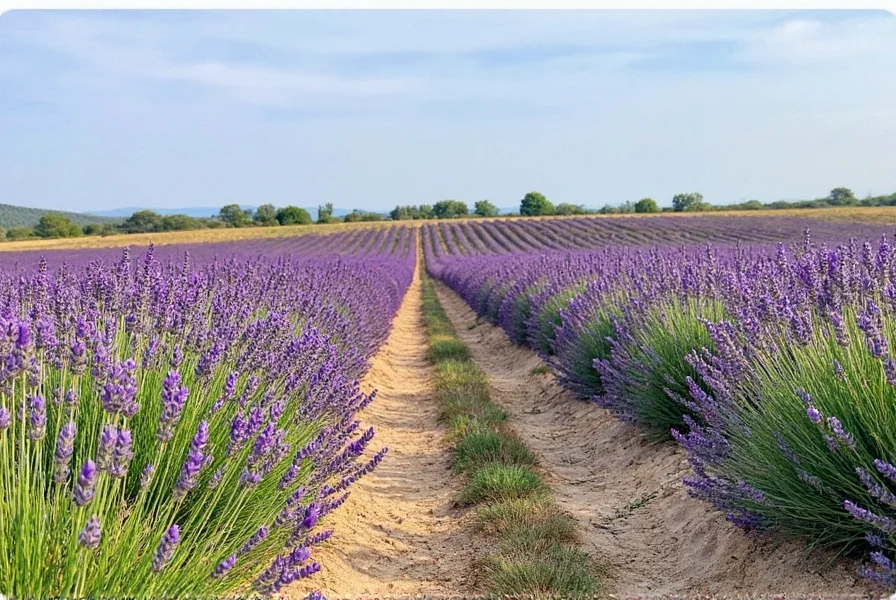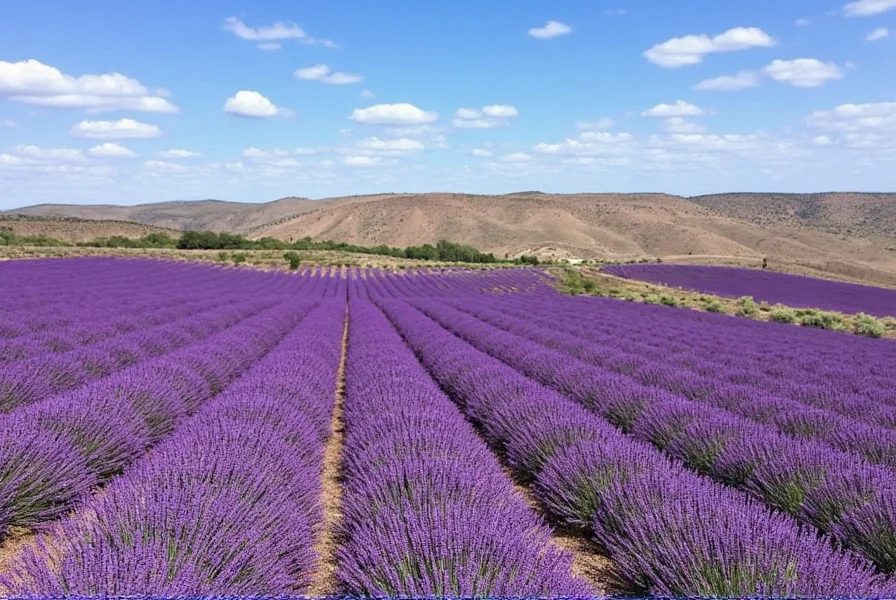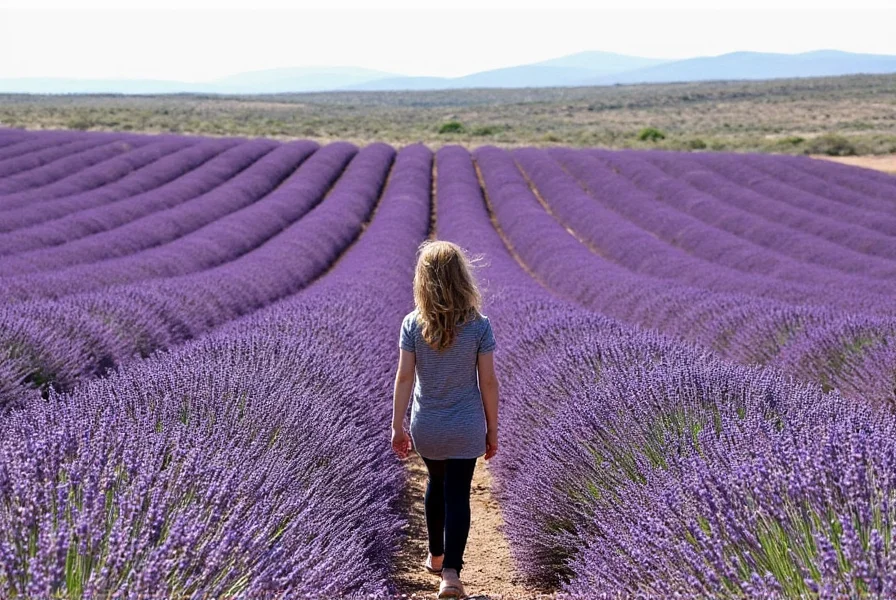Table of Contents
Introduction to Mexican Lavender
Mexican lavender (Hyptis suaveolens), also known as cheese weed or hoja santa, is a versatile culinary herb native to Mexico and Central America. Unlike ornamental lavender, this edible member of the mint family delivers a unique citrusy-floral flavor profile that enhances savory dishes, beverages, and desserts. This comprehensive guide covers its culinary applications, storage methods, and scientific background to help you confidently incorporate this underutilized herb into your cooking.

What Is Mexican Lavender?
Mexican lavender (Hyptis suaveolens) is a perennial herb in the Lamiaceae (mint) family, distinct from true lavender (Lavandula species). Indigenous to Mexico and Central America, it's traditionally used in Mexican cuisine for its aromatic leaves and flowers. Unlike ornamental lavender varieties, Mexican lavender is specifically cultivated for culinary use and has been documented in historical Mexican cookbooks since the 16th century.
Scientific studies confirm its safety for consumption, with research published in the Journal of Food Science (2020) highlighting its culinary applications. The plant features small purple flowers and aromatic leaves that release a citrus-herbal fragrance when crushed. It thrives in warm climates and is commonly grown in home gardens for fresh culinary use.
Flavor Profile and Aroma
Mexican lavender offers a complex flavor profile that combines sweet floral notes with distinct citrus undertones and a subtle herbal bitterness. This unique combination makes it ideal for balancing rich flavors in traditional Mexican dishes like mole sauces, where it complements chocolate and chili peppers. Its aroma is fresh and uplifting, with top notes of lemon verbena and subtle hints of eucalyptus.

When using Mexican lavender, remember that it's highly potent. Culinary experts recommend starting with 1/4 teaspoon of dried leaves per serving and adjusting to taste. Fresh leaves can be used more liberally for garnishing, while dried forms work best for infusing oils and baking. The herb's flavor intensifies when heated, so add dried lavender early in cooking processes and fresh leaves toward the end.
How to Use Mexican Lavender in Cooking
Here are professional chef-approved methods for incorporating Mexican lavender into your recipes:
- Infused Oils: Add 2-3 fresh sprigs to 1 cup of extra virgin olive oil. Let steep for 24 hours for salad dressings or drizzling over grilled vegetables.
- Baked Goods: Mix 1/2 teaspoon of finely ground dried lavender into cake batters or cookie dough. Pair with lemon or honey for optimal flavor balance.
- Tea Blends: Combine 1 teaspoon dried lavender with chamomile and mint for a digestive tea. Steep for 5-7 minutes for best results.
- Sauces and Salsas: Add 1/4 teaspoon dried lavender to tomato-based salsas or mole sauces to enhance depth of flavor without overpowering.
- Cocktails: Muddle fresh leaves with simple syrup for lavender-infused margaritas or gin cocktails.
Cooking Tips and Tricks
These professional techniques ensure optimal flavor extraction and safety:
- Pairing Recommendations: Mexican lavender complements citrus fruits, honey, chocolate, tomatoes, and chili peppers. Avoid pairing with strong mint flavors which can clash.
- Storage Guidelines: Store dried lavender in a dark glass jar away from light and heat. For fresh leaves, wrap in damp paper towels and refrigerate in a sealed container for up to 5 days.
- Substitution Guide: If substituting for traditional lavender, use 50% less Mexican lavender due to its stronger flavor profile. For recipes calling for dried traditional lavender, use 1/2 teaspoon Mexican lavender for every 1 teaspoon traditional.
- Food Safety Note: Only use culinary-grade Mexican lavender specifically labeled for consumption. Ornamental varieties may contain pesticides unsuitable for eating.

Buying Guide for Mexican Lavender
When purchasing Mexican lavender, prioritize quality and safety:
| Product Type | Key Features | Quality Indicators | Best For |
|---|---|---|---|
| Culinary Dried Lavender | Organic certification, no additives, vacuum-sealed packaging | Bright green color, strong citrus aroma, no stems or debris | Baking, tea blends, spice rubs |
| Fresh Leaves | Locally sourced, harvested within 48 hours, refrigerated shipping | Vibrant green leaves, no wilting or discoloration | Garnishing, fresh salsas, cocktail infusions |
| Essential Oil | Food-grade certification, cold-pressed, third-party tested | Clear liquid with no sediment, citrus-forward aroma | Specialty applications requiring concentrated flavor |
Mexican Lavender vs. Other Lavenders
| Characteristic | Mexican Lavender (Hyptis suaveolens) | English Lavender (Lavandula angustifolia) | Lavandin (Lavandula x intermedia) |
|---|---|---|---|
| Scientific Classification | Mint family (Lamiaceae) | Lavender family (Lamiaceae) | Lavender family (Lamiaceae) |
| Primary Culinary Use | Traditional Mexican dishes, savory applications | Desserts, baked goods, sweet applications | Perfumery, aromatherapy |
| Flavor Profile | Citrus-forward, herbal, subtle bitterness | Sweet floral, woody, honey-like | Strong camphor notes, less floral |
| Edibility Rating | High (culinary-grade only) | High (culinary-grade only) | Low (not recommended for consumption) |
| Origin | Mexico and Central America | Mediterranean region | France and Europe |

Frequently Asked Questions
Is Mexican lavender the same as regular lavender?
No, Mexican lavender (Hyptis suaveolens) belongs to the mint family and has a distinct citrus-herbal flavor profile, while traditional lavender (Lavandula species) is in the lavender family with sweeter, more floral notes. They're botanically different plants with different culinary applications.
Is Mexican lavender edible?
Yes, culinary-grade Mexican lavender is safe for consumption and has been used in Mexican cuisine for centuries. However, only use products specifically labeled for culinary use. Ornamental varieties may contain pesticides and are not safe to eat.
How do I store Mexican lavender?
Fresh Mexican lavender should be stored in the refrigerator wrapped in a damp paper towel inside a plastic bag for up to 5 days. Dried Mexican lavender should be kept in an airtight glass container away from light and heat. Properly stored, dried lavender maintains potency for 6-12 months.
Can I substitute Mexican lavender for traditional lavender in recipes?
You can substitute, but with adjustments. Mexican lavender has a stronger citrus flavor and is more potent than traditional lavender. Use half the amount of Mexican lavender when substituting for traditional lavender in sweet dishes. For savory applications, Mexican lavender is preferable due to its complementary herbal notes.
What are the health benefits of Mexican lavender?
Traditional Mexican medicine uses Mexican lavender for digestive support and mild sedative effects. Research published in the Journal of Ethnopharmacology (2018) suggests potential anti-inflammatory properties. However, consult a healthcare professional before using it for medicinal purposes, as scientific research specific to Mexican lavender is limited compared to traditional lavender.
Where can I buy Mexican lavender?
Purchase culinary-grade Mexican lavender from specialty spice retailers, Mexican grocery stores, or reputable online vendors specializing in culinary herbs. Look for organic certification and clear labeling indicating it's intended for food use. Avoid ornamental varieties sold at garden centers unless explicitly labeled as food-safe.
Conclusion
Mexican lavender offers a unique culinary experience that bridges traditional Mexican flavors with modern gastronomy. Its distinctive citrus-herbal profile makes it an invaluable ingredient for chefs seeking to create authentic Mexican dishes or innovative fusion cuisine. By understanding its proper usage, storage, and sourcing, you can confidently incorporate this versatile herb into your cooking repertoire.
Remember: When using Mexican lavender, start with small quantities and gradually increase to taste. Its potency means a little goes a long way, and proper application transforms ordinary dishes into extraordinary culinary experiences.










 浙公网安备
33010002000092号
浙公网安备
33010002000092号 浙B2-20120091-4
浙B2-20120091-4